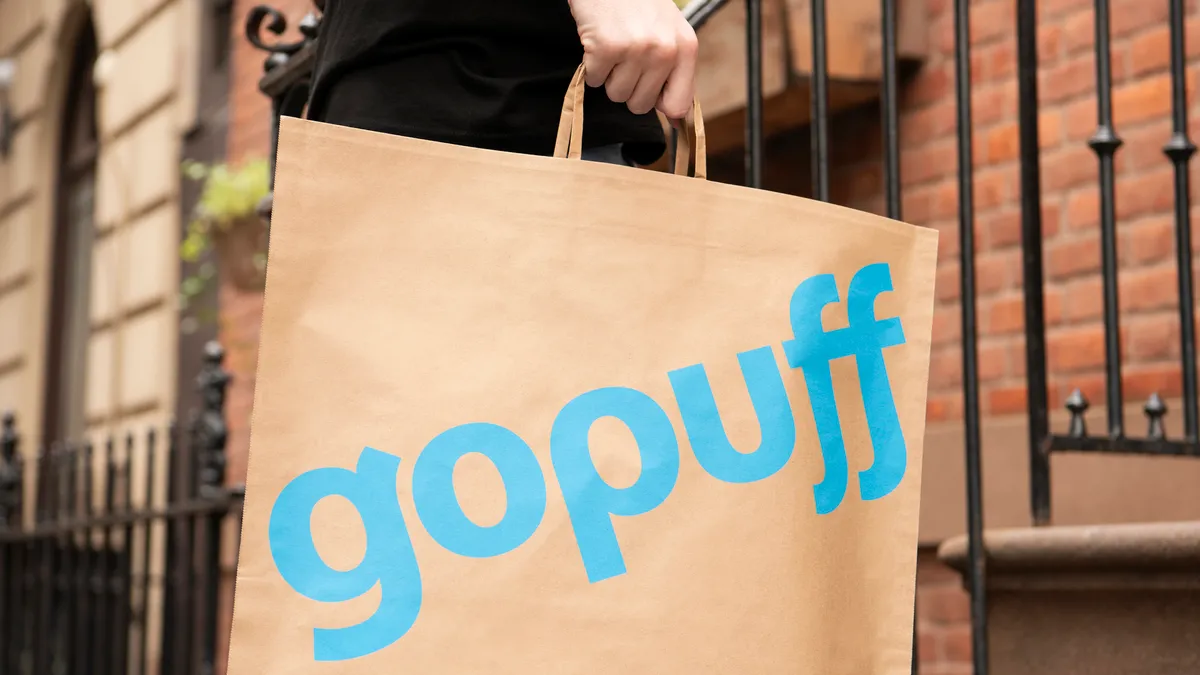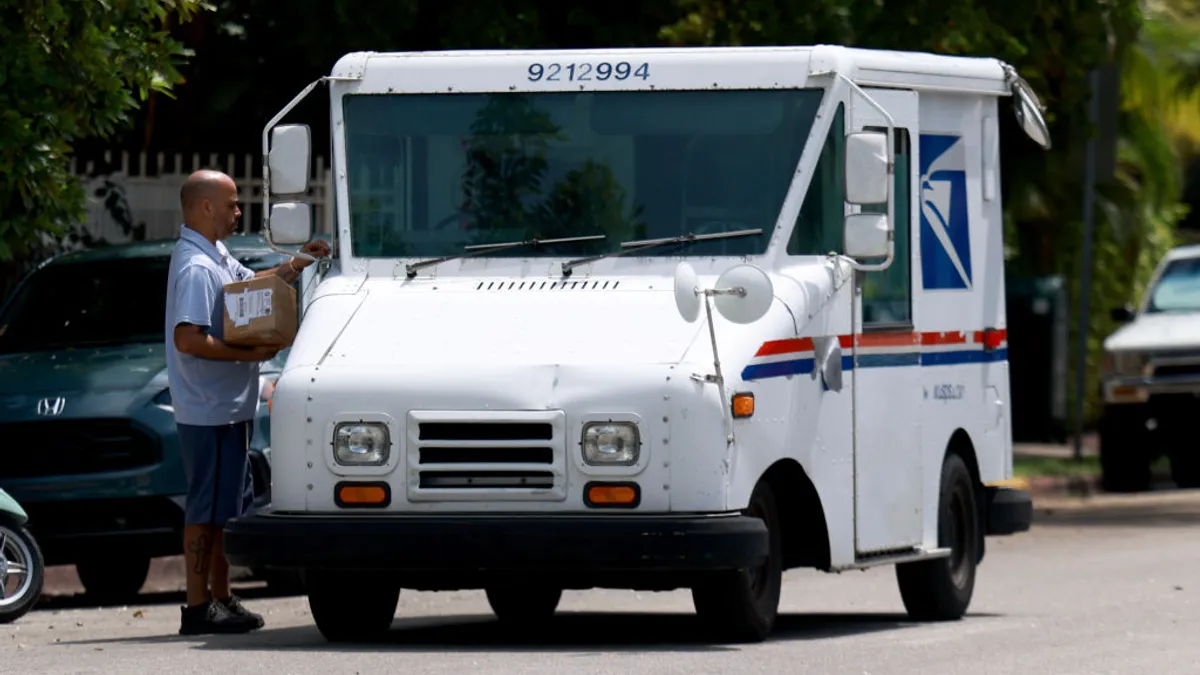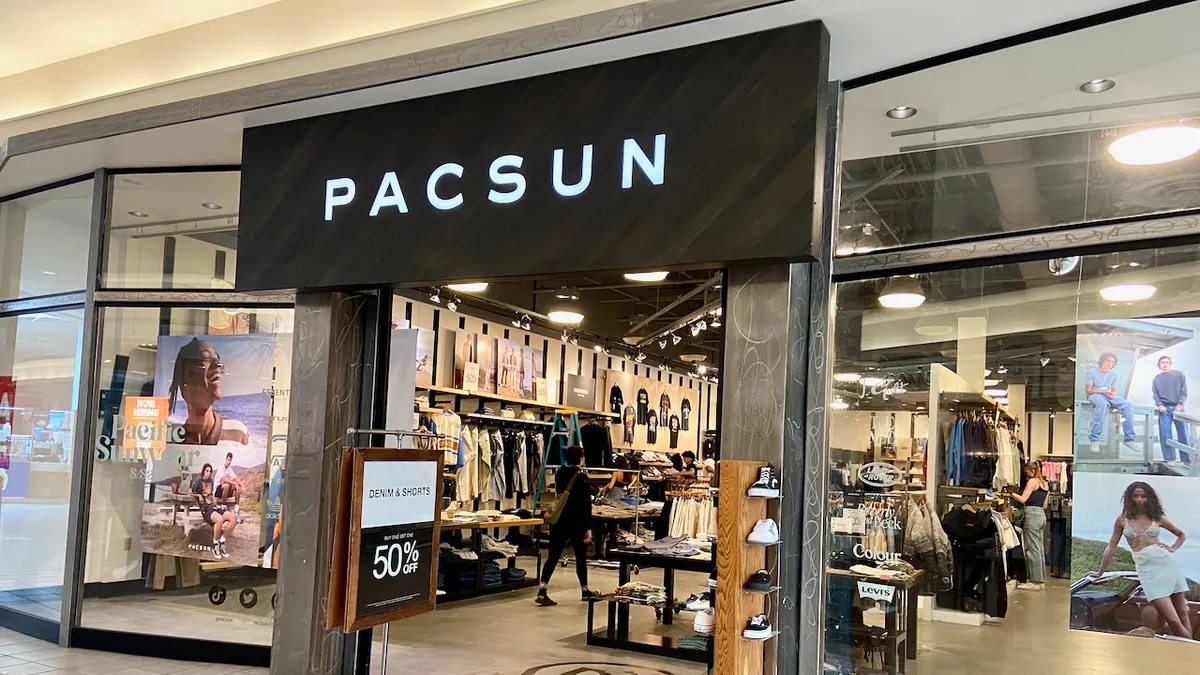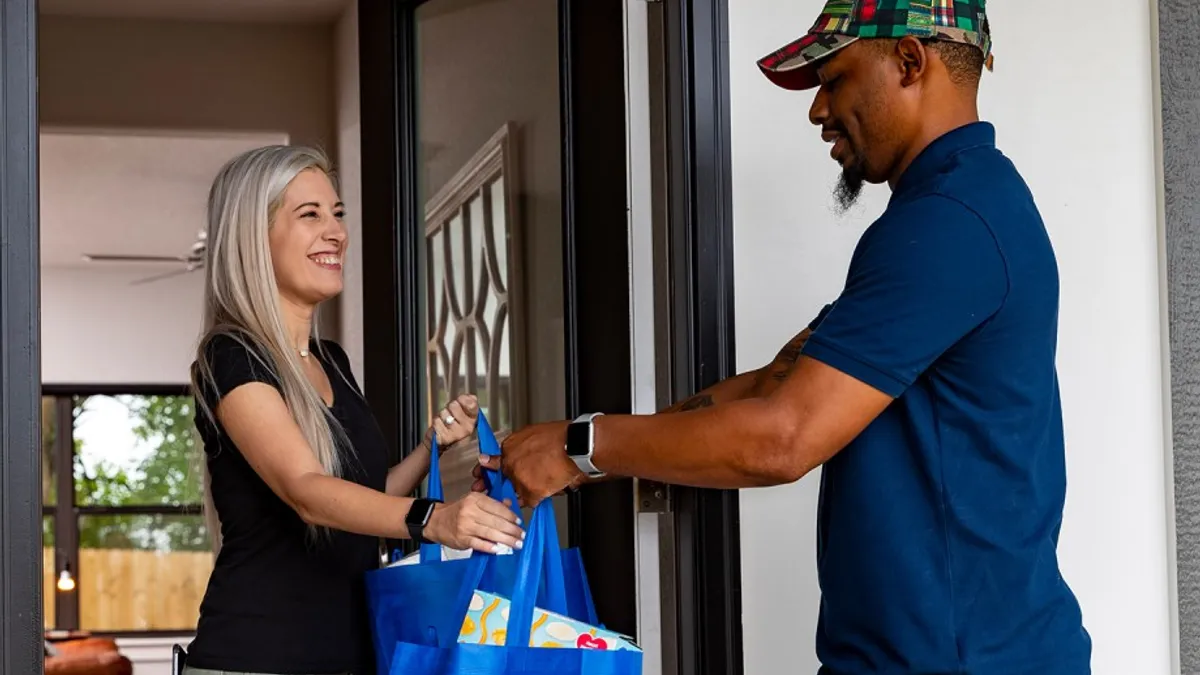After growing in leaps and bounds over the past few years, Gopuff has pumped the brakes on its rapid delivery service and is looking to adjust course amid increasingly challenging market conditions.
On July 12, the instant delivery company announced a second round of layoffs in just four months. It also said it’s paring back its U.S. fleet of small warehouses, which deliver convenience items to consumers in around 30 minutes or less.
The move reflects a tightening investment climate that has become less friendly toward companies that can’t show a short-term path to profitability.
“While it may have been easy to attract money and investment over the past two years, funds will flow less freely to companies that can’t show a profit,” said Neil Saunders, managing director with GlobalData. “That’s not good news for quick delivery, where much of the market needs to be subsidized by investments.”
In a memo to investors, Gopuff founders and co-CEOs Yakir Gola and Rafael Ilishayev said the company is focused on accelerating its path to profitability, and said it plans to start turning a profit in around two years. The broader instant delivery industry, which has recently been beset by closures among a pack of colorfully named startups, has reached “an inflection point,” they said.
Other sources think that’s a charitable interpretation.
“The bubble is bursting” on rapid delivery, said Celia Van Wickel, senior director of digital commerce at Kantar.
Considering Gopuff is far and away the leader in instant delivery, its struggles seem to have further darkened the outlook for an opportunity that startups, tech firms and established retailers are all chasing.
But while the road ahead is now much tougher for Gopuff and others, sources said there’s still a clear market opportunity for companies to grab. They need to evolve their business model and adjust their expectations. Success, it turns out, will take longer than 15 minutes to arrive.
Getting to profitability faster
In their memo, Gola and Ilishayev acknowledged that Gopuff was incentivized to grow quickly amid a bull market over the past two years or so. Around half of the company’s approximately 600 warehouses went live over the past year, Bloomberg reported, citing sources familiar with the company’s operations. Each location costs around $250,000 to open, the publication noted.
The Philadelphia-based company likely thought it had more time from investors to scale and improve profitability, said Jordan Berke, founder and CEO of Tomorrow Retail Consulting, which has conducted research into Gopuff’s operations.
“Their investors have said, ‘We can’t accept that five- to eight-year horizon. We need [you to] to be able to prove the business is viable in the next two years,’” he said.
Gopuff has said in the past that it’s profitable in markets where it has been operating for at least 18 months. Berke said his firm’s research indicates that only a fraction of Gopuff’s warehouses bring in enough orders per day to be profitable, adding it might take longer to sufficiently boost volume at the other sites than investors are willing to wait. Gopuff’s fulfillment centers need to bring in at least 400 orders per day to make money, but only about 10 to 20% are at that level, he said.
While he thinks Gopuff’s long-term prospects remain solid, Berke said the company may need to close additional facilities to satisfy investors who have much less patience than they did last year, when Gopuff raised more than $1 billion at a $15 billion valuation.
In addition to its latest cuts across personnel and facilities, Gola and Ilishayev said Gopuff is accelerating its path to profitability by leaning on high-performing warehouses, rationalizing its assortment and focusing on promising new selling opportunities. Their memo noted that Gopuff is the first authorized seller of Apple products among instant delivery companies.
Gopuff is also focusing on its digital ads business and other business opportunities with brands that can add incremental revenue, the founders noted.
Gopuff will need to explore other ways to trim operations while also expanding its appeal, Van Wickel said. It’s entered new markets with a “splash,” she said, by distributing coupons, advertisements and holding events. In the Atlanta suburb where she lives, “they were doing a lot of deals and discounts and promotions to get me to order” — an expensive practice common among instant delivery firms that will need to become more cost-effective over time, she said.
Gopuff has expanded its assortment beyond snacks and sodas to include fresh-made pizza, local products and groceries, and Van Wickel said it needs to continue to look beyond convenience needs to build baskets.
She said Gopuff should also look at ways to improve order batching and delivery efficiency, adding that the company may need to look beyond its legacy warehouse model to different types of facilities, including automated ones, that could add value.
Van Wickel said Gopuff could succeed through retailer partnerships in the U.S. as grocers’ interest in instant needs delivery grows. It already has one blueprint set down for this model, having launched rapid delivery service for U.K. grocer Morrisons earlier this year.
Gopuff has extensive expertise in running dark stores, which could make it a valuable service provider, Van Wickel noted. However, it will have to compete with the likes of DoorDash and Instacart, which are jockeying to become instant delivery providers for retailers via stores as well as dedicated warehouses.
Delivery speed vs. order accuracy
Despite its recent challenges, Gopuff is still a strong operator, sources said. Its app, which features colorful messages and gamification features, promotes repeat usage, said Van Wickel. Berke noted that Gopuff’s shopping experience is highly appealing to young consumers.
“[This is] a brand that has character and really a Gen Z DNA,” he said.
As a result, Gopuff has been able to steadily increase the amount its customers spend on the platform. Average monthly spending per customer was $74 in May, according to data from Bloomberg Second Measure. However, app downloads have tapered off over the course of this year, according to app data firm 42 Matters, underscoring the company’s challenges in reaching new users.
Saunders noted that Gopuff is far more advanced than other startups in the space that have struggled to find their footing in the U.S.
“While the [instant delivery] business model needs to be proven, they are further along in that process,” he said.
Those newer startups have focused on operating in just a few major cities — mainly New York, where high population density has promoted a feeding frenzy among rapid delivery firms over the past two years or so. As e-commerce demand has slowed, investors have pulled back and costs have mounted, a few of those firms have gone out of business while others have slowed their growth or pulled out of the U.S.
Henrik Laubscher, founder of research and consulting firm Blue Cape Ventures, wrote in a recent post on food technology news site Hngry.tv that these quick commerce firms crashed into the U.S. with outsized expectations and without an effective business plan. Many pulled back from their promises of 15-minute delivery after realizing it wasn’t a meaningful selling point and have offered poorly tailored assortments while dishing out too many product discounts to consumers.
“The pandemic created a mirage for these companies. Thus, constantly scrutinizing markets and retaining frugality will be key for continued survival,” Laubscher wrote.
Rapid delivery is still a significant opportunity for companies, said Berke, who noted that the challenges Gopuff and others have faced offer some vital lessons, a key one being that delivery speed isn’t as important to users as getting what they order.
“The biggest impact that Gopuff has had on the U.S. market is training customers not only on speed but on reliability, because Gopuff’s business model enables them to deliver a 100% fill rate, which means what you buy is what you get,” Berke said.
The unsettling of instant delivery startups could offer an opening for established grocers. Major players like Kroger, Ahold Delhaize and Albertsons have launched 30-minute delivery in select markets alongside Instacart and DoorDash, which are enabling service via their on-demand workforces.
Most of these new services are fulfilling orders from their stores, which helps keep costs down, while others are turning to dark stores to boost fill rates and operate closer to consumers, particularly in urban areas. Last month, Canadian grocer Loblaw announced it will offer 30-minute delivery powered by DoorDash dark stores in a few major cities.
Berke said on-demand delivery isn’t something consumers need to have in 15 minutes, or even in 30 minutes necessarily. That means the competition in instant delivery could very well become an extension of the e-commerce battle that’s already playing out among major grocers.
“Rather than 15 minutes, it's likely a one-hour world, and the omni grocery community is in a much better position to win that in a profitable, sustainable way,” Berke said.























